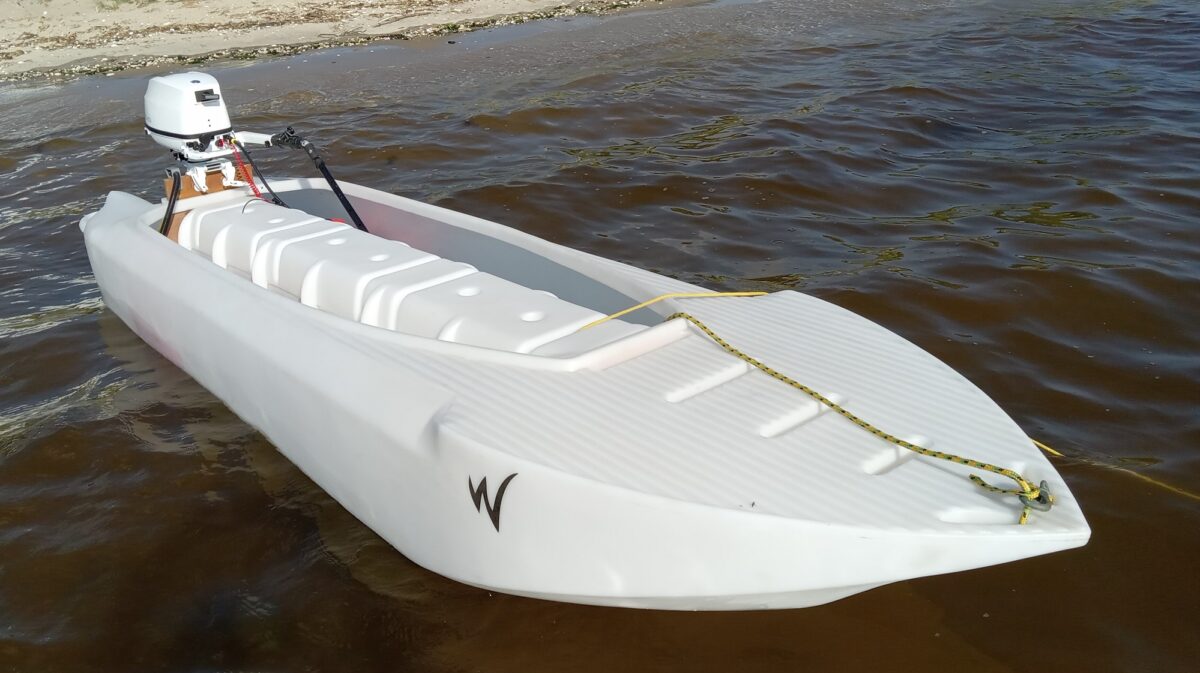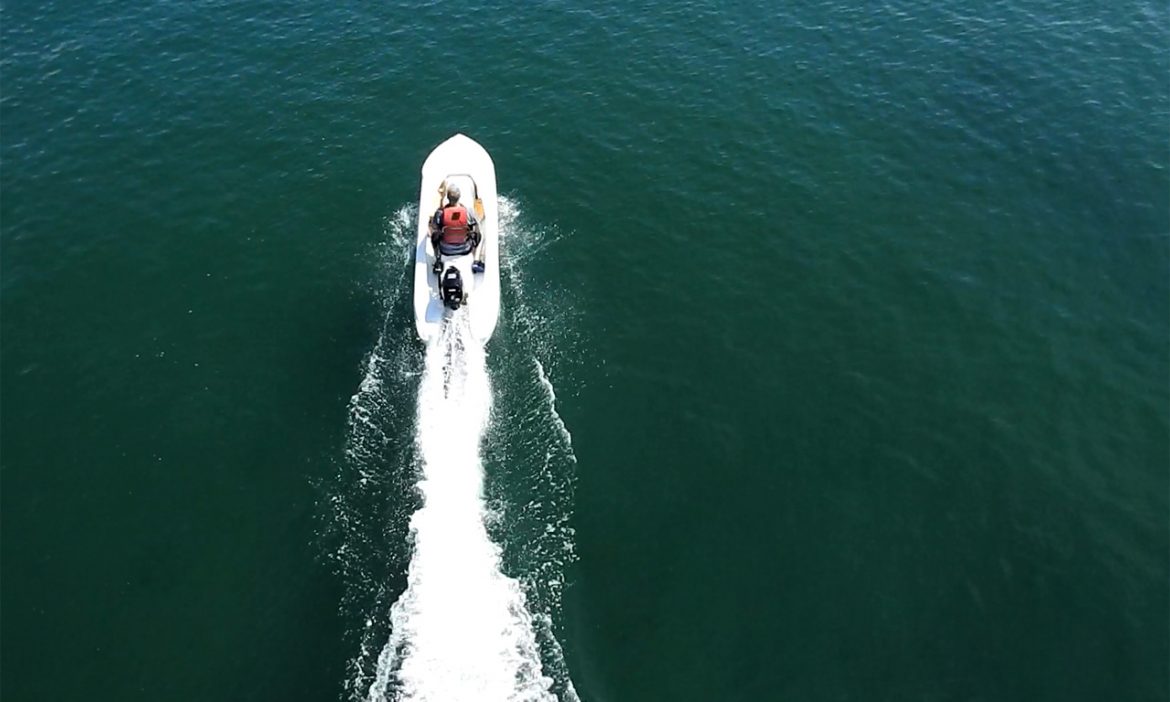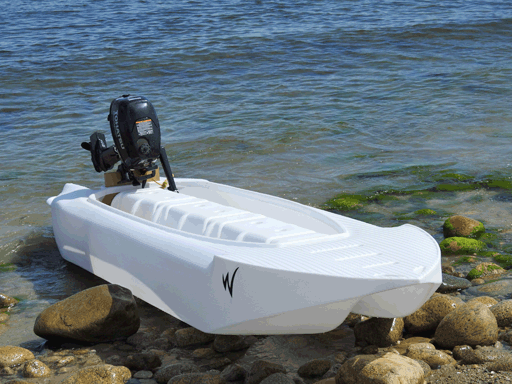Thanks to the revolution in electronics and portable phones, we’ve learned to accept the notion that smaller can be better. In the world of recreational and sports fishing, kayaks have replaced many boats, or at least they’ve replaced many canoes, pirogues, etc., which served for decades as popular alternatives to boats.
Fishing kayaks’ success is due to their lower cost of ownership, portability, and good shallow water capabilities.
But kayaks’ lack of stability combined with their poor ergonomics and dismal range of travel prevents them from challenging the dominance of the full fledged boat.
Indeed, the typical boat that people fish out of can be a bass boat, a Jon boat, or a skiff (flats boat), but in any case, it offers enough room and stability for a crew of at least two anglers, and it offers to take them out on long trips, in good or acceptable comfort during transit and actual fishing.
When it comes to boats, the bigger the better. Not necessarily.
Bigger boats can take more passengers on board, they are stabler and more comfortable compared to similar but smaller boats, and they are less problematic in choppy waters. And when boating is concerned, speed is fun, and so is having guests on board, and this is why bigger boats rule.
Without going through the clichés about a boat being a money pit, and the day you sell your boat being one of the happiest days of your life, economic factors are worth consideration in terms of dollars and time, with the latter sometimes being more important – The total number of hours a boat owner spends on the water fishing is not that big, which is why every hour spent on unwanted activities such as maintenance, transportation and waiting in line at boat ramps counts more, and makes the ownership of a full fledged boat less attractive. The alternative to transporting the boat on a trailer is paying for a docking spot in a marina, or for dry storage, but these just transform one problem into another, without offering much flexibility in terms of places that you can can go fish in.
Flat bottomed boats such as Jon boats and skiffs are great for going in flat water, except when it comes to their reaction to other boats’ wakes, which leaves much to be desired. This lackluster performance, coupled with the fact that such boats do not fare well in choppy water and rough weather, makes them basically fair weather watercraft for inland fishing.
While the last sentence is generally true, it still doesn’t reflect another critical limitation that owners of big boats suffer from, which is the inability to go in very shallow water, or in water where much vegetation grows. This limitation is particularly annoying to anglers who go after species that thrive in fisheries that are characterized by shallow water and /or abundant vegetation. Effectively, an 18 ft skiff drafts more than a foot, due to the need to keep its propeller running below the surface, and its skeg a few inches away from the bottom. And one foot of water is shallow for some boaters, it is not real skinny water for others. The presence of rocks and oyster bars and sand bars on the bottom, coupled with low tides, can transform a fishing trip in a big boat into a most unpleasant experience. And big boats are too big to move by hand, and you can’t paddle them…
Smaller boats can be an alternative to a big boat, but not necessarily a good one.
By small boats we mean portable boats, namely ones that do not require a trailer for transportation. The ability to launch elsewhere than at boat ramps is important, as it frees the owner from wasting precious time, and the likelihood of being stranded in a small boat is much reduced. Still, typical small boats are not paddle craft, and this means that they are practically useless if the water is too shallow or too rich with vegetation for their motor to run properly.
Other disadvantages of small boats compared to big ones are that they are tippy, far less uncomfortable, and some, like a motorized board whose name includes the word skiff for some reason, do not allow for more than one person on board, and such self inflicted solitude is kind of sad. It is true that fishing buddies can be annoying, sometimes, but that certainly doesn’t mean that you’d want to deprive yourself of their presence at all times.
The better alternative to big boats and skiffs
The new, patented Wavewalk Series 4 (S4) from Wavewalk offers the most comprehensive and effective alternative to a full fledged skiff or Jon boat –
Price wise, the S4 costs a fraction of the price of a full size Jon boat or skiff, and not just thanks to the fact that it does not require a trailer for transportation.
The Wavewalk S4’s Polyethylene twin-hull is maintenance free, as it requires neither cleaning nor painting.
The S4 provides better stability than bigger boats do, thanks to the combined effect of its catamaran hulls and the saddle seat that allows the user to balance themselves in the most easy, intuitive and effective way, similarly to the way the users of personal watercraft and ATV drivers do.
The S4 is more seaworthy than flat bottomed Jon boats and skiffs.
As far as the number of crew on board, the S4 can accommodate up to three fishermen on flat water, and two fishermen in rough waters. Fishermen on board can fish standing.
The S4 works perfectly as a paddle craft, both with kayak and canoe paddles. This means that its users are not limited by the draft of its outboard motor, or the need to protect its propeller from vegetation. The likelihood of an S4 getting stranded is lower than that of any other watercraft.
The Wavewalk S4 can be launched almost anywhere, including rocky, muddy and sandy beaches, marshes, sloped terrain, etc. It can also be outfitted with a mud motor, similarly to Jon boats and skiffs.
The following play list of videos shows various aspects of the S4 –
The following animated slideshow shows some of the Wavewalk S4 capabilities –
Disadvantages of the Wavewalk S4 compared to full size boats and skiffs
Speed wise, the S4 cannot compete with a full size Jon boat of skiff powered by a big and powerful motor. But the S4 outfitted with a portable, 6 HP outboard can go at speeds attaining 18 mph, which is pretty good for most fishing trips that do not require traveling over excessively long distances.
The S4 has a 650 lbs load capacity, which is impressive for its small size, and even more so for its extremely light weight, which is 98 lbs without a motor, but this payload is still not as much as a large size Jon boat or skiff can carry.
Recommended articles:


